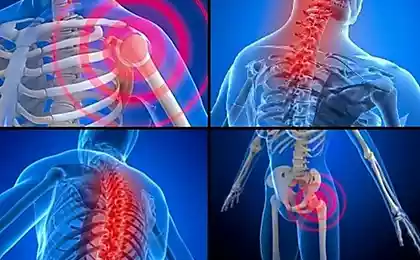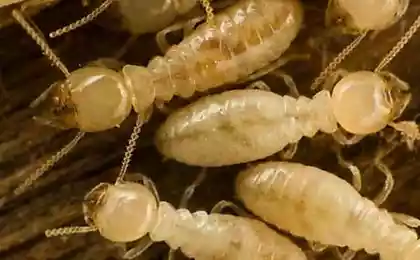261
5 dangerous little creatures that cause great pain
You can not offend those who are small and look weak. Because it is mean, and in response, small creatures can do even more vile - from our large and generous "sight". Among the large number of animals dangerous to humans, we can distinguish a motley group of tiny God’s creatures, after acquaintance with which more than anything in the world you want ... to die, so as not to experience what is worse than not – excruciating pain. It is possible that a meeting with these creatures does not threaten any of us, but it does not hurt to know small potential sadists in the face. For he who knows is already a little armed. It's kind of like a Top Five.
Cubojellyfish

This animal is considered almost the most poisonous organism on Earth, while the size of the jellyfish Irukandji barely exceeds the dimensions of peanut nuts. Irukandji likes warm ocean water, so the place of residence chose the Australian Great Barrier Reef. If someone accidentally comes into contact with a box jellyfish, it will not just hurt. One of the victims of Irukandji reported that the physical torture caused by the poison of the creature, so intense that even the maximum permissible dose of morphine does not bring relief, you need something stronger, for example, fentanyl. There is no antidote to the toxin of irukandji, and the survival of victims depends on the state of their health, especially the circulatory system. However, they rarely die, but memories remain such that it would be better to erase them. It is written that as global warming, jellyfish Irukandji expand their range. They were seen off the coast of Great Britain and Japan, in the waters of the Atlantic. The effect of the poison of a small jellyfish develops gradually. At first, everything seems not too bad - in the place of contact with the tentacles, swelling develops, some discomfort occurs. However, after 5-45 minutes (everything happens), real pain comes - in the back, head, muscles, abdomen and chest. Nausea and vomiting may be added, anxiety. All this is called “irukandji syndrome”, and if the patient is not provided with medical care, pulmonary edema can develop with a predictable fatal outcome. The calf of the jellyfish is only 2.5 cm in diameter, and the stinging tentacles reach a 30-centimeter length. These subtle transparent predators swim faster than Olympic champions. In order not to become their unwitting victim, you should not leave uncovered areas of the skin. In the following video, scientists deliberately expose themselves to contact with Irukandji in order to suffer in front of a video camera and tell the world about the pain they were prepared for.
The Tiger Bee (Vespa Mandarinia)
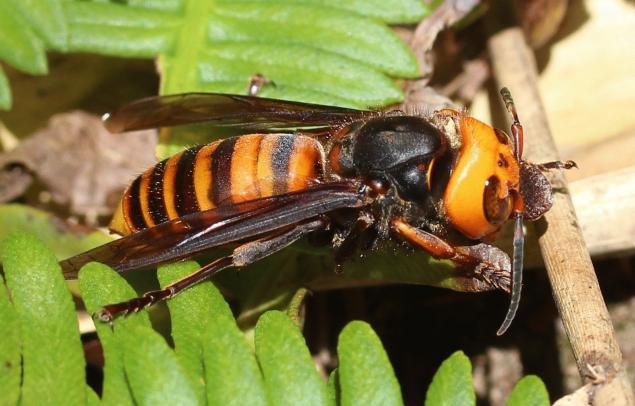
Often people laugh at each other when someone publicly and revealingly panics at the sight of an annoying bee or wasp. For the inhabitants of Japan, there is nothing funny in this behavior - for a giant Asian hornet, he is a "tiger bee", as if created to be feared more than death. This beautiful and dangerous insect is really big even for Hymenoptera “intellectuals”. Five centimeters long, a huge face, and in the poisonous gland - an enzyme rumored to be able to turn human flesh into nothing. The most concise description of the effect of the bite of Vespa Mandarinia is as follows: “As if a hot nail in the heel was driven.” In Japan, the giant hornet kills more people each year than any other animal. Because of its venom, the Japanese would have died out long ago, but, to their simple human happiness, the favorite prey of the insect is the ordinary honeybee - a distant, so to speak, relative. In a minute, the hungry Vespa Mandarinia is able to deal with four dozen ordinary bees. If a handful of hornets are brought to the apiary, then for a couple of hours from bee families there will only be “horns and legs”. A small monster only bites a man for protection. It is difficult to escape from an angry Asian hornet even on a bicycle, since it develops speeds up to 50 kilometers per hour.
The habitat of the “tiger bee” is quite extensive. According to biologist Ross Piper, these massive insects were previously considered inhabitants of the mountainous regions of Japan, but with the development of shipping and trade settled in Asia. They can be found in Russia (Primorye) and Nepal, in Ceylon and Korea, in mainland China and on the island of Taiwan. They write that the larvae of the giant hornet are able to regurgitate a special liquid, which serves as doping for adult animals, allowing you to fly for tens of kilometers without refueling. A synthetic version of this substance is used by professional athletes. For example, 2000 Olympic champion Naoko Takahashi boasted that she owed her success to Japanese aspen doping. In order not to be bitten by a tiger bee, it is necessary to avoid those places where the insect nests. These are burrows abandoned by other animals in the forests, tree hollows and similar “dwellings”. Hell hornets usually guard their homes with special zeal, even if they pretend to be a cloud and mutter that “it seems like it’s starting to rain.”
Somik candiru
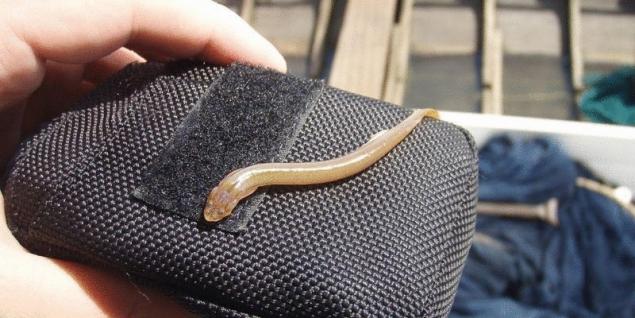
Parasitic fish. Yes, and this combination of properties happens. Somik Candiru, aka Vandella, is one of the strangest creatures among the exotic creatures that give the Amazon the charm of green hell on Earth. This “fish-toothpicks” relishes with blood, and more than anything in the world likes to penetrate a person into the urethra – so that they crawl to the very bladder and start there, inside, biting and eating. Further, without surgery, the baby cannot be removed from the body of a bather howling from pain and burning. If the victim of the vandellia does not consult a doctor, the fish inside will die, and the king of nature himself can go to the forefathers after it. Sometimes Amazonian hemorrhage swims into a person's ass, with similar painful results.
In South America, it is believed that candiru attracts the smell of urine. So attractive that the fish allegedly jumps into the ureter to someone who pees in the Amazon or its influx from the shore. The legend is beautiful, but without grounds, because when searching for victims catfish uses eyesight and attacks only those who have already immersed the genitals in the river. Candiru's habitat includes Brazil, Peru, Ecuador, Colombia and Bolivia - the entire vast Amazon basin. So that this small creature does not cause severe pain in a known place, you just need not swim in the rivers where the catfish lives. Or dress according to danger.
Bullet ant
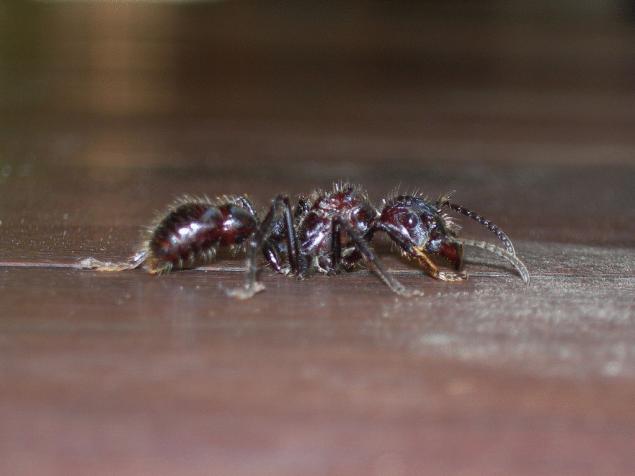
The insect Paraponera clavata in the native habitat of human neighbors is called a “round-the-clock ant” – for the duration of pain after a bite caused by this ant. The venom of these creatures, characterized by a powerful sting, is a neurotoxic peptide. Ants use it for food, killing caterpillars and other small bugs. Humans suffer too - the bite of Paraponera clavata, one of the largest species of ants on the planet, is considered one of the most painful trials, the nature of the daden. Bullet ants live in the jungles of Central and South America. On the Schmidt pain scale, the effect of being bitten by these rather intelligent and evil creatures is estimated at a maximum of four. An ant will pick up if it thinks its life is in danger. It feels like you put your finger on an anvil and then asked someone to hit it with a sledgehammer. Then comes numbness and muscle weakness - such that it is difficult to hold a cup of coffee in your hand.
This feature of South American ants did not fail to take advantage of the savages, bringing up in their children conditioned reflexes of masculinity. The Satere-Maue Indian tribe, which squanders in the Amazon jungle, uses these insects to initiate adolescents. Two knitted gloves filled with bullet ants are taken, and growing boys are forced to wear them repeatedly, and at the same time dance with cheerful faces.
As a rule, citizens unaware of the danger, for example, foreigners, get acquainted with stinging ants, resting their hands on the trunk of a tree on which Paraponera clavata crawls.
Horrible leaffish
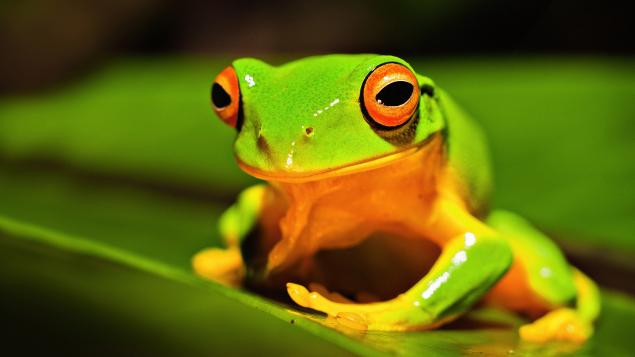
Little golden frog that you want to eat or at least pet, but you can not. In general, the Phyllobates terribilis in question is the most poisonous vertebrate animal that exists today. The Leaf Frog, meanwhile, resides in the Red Book as a creature threatened with extinction. These amphibians are very small – from a centimeter to five in length. Each one has enough poison to kill 10 adults or ten thousand mice. Moreover, there is evidence that if you take Phyllobates terribilis and wrap in a paper towel, this hygienic object can poison a person to death. Wild tribes living in the jungle use frog poison - batrachotoxin - to process the tips of wind arrows. Poisoning leads to rapid paralysis of the nerves and cardiac arrest. Horrible leaf climbers live in southwestern Colombia, in forests on the Pacific coast. Interestingly, these amphibians are not born toxic. Such are the insects with which frogs satisfy hunger. The poison that the frog secretes through the skin is not for hunting, but for protection from predators. If the golden “demon” from a young days kept in the terrarium and revered with ordinary flies, he becomes safe and cute.
Source: neobychno.com/
Cubojellyfish

This animal is considered almost the most poisonous organism on Earth, while the size of the jellyfish Irukandji barely exceeds the dimensions of peanut nuts. Irukandji likes warm ocean water, so the place of residence chose the Australian Great Barrier Reef. If someone accidentally comes into contact with a box jellyfish, it will not just hurt. One of the victims of Irukandji reported that the physical torture caused by the poison of the creature, so intense that even the maximum permissible dose of morphine does not bring relief, you need something stronger, for example, fentanyl. There is no antidote to the toxin of irukandji, and the survival of victims depends on the state of their health, especially the circulatory system. However, they rarely die, but memories remain such that it would be better to erase them. It is written that as global warming, jellyfish Irukandji expand their range. They were seen off the coast of Great Britain and Japan, in the waters of the Atlantic. The effect of the poison of a small jellyfish develops gradually. At first, everything seems not too bad - in the place of contact with the tentacles, swelling develops, some discomfort occurs. However, after 5-45 minutes (everything happens), real pain comes - in the back, head, muscles, abdomen and chest. Nausea and vomiting may be added, anxiety. All this is called “irukandji syndrome”, and if the patient is not provided with medical care, pulmonary edema can develop with a predictable fatal outcome. The calf of the jellyfish is only 2.5 cm in diameter, and the stinging tentacles reach a 30-centimeter length. These subtle transparent predators swim faster than Olympic champions. In order not to become their unwitting victim, you should not leave uncovered areas of the skin. In the following video, scientists deliberately expose themselves to contact with Irukandji in order to suffer in front of a video camera and tell the world about the pain they were prepared for.
The Tiger Bee (Vespa Mandarinia)

Often people laugh at each other when someone publicly and revealingly panics at the sight of an annoying bee or wasp. For the inhabitants of Japan, there is nothing funny in this behavior - for a giant Asian hornet, he is a "tiger bee", as if created to be feared more than death. This beautiful and dangerous insect is really big even for Hymenoptera “intellectuals”. Five centimeters long, a huge face, and in the poisonous gland - an enzyme rumored to be able to turn human flesh into nothing. The most concise description of the effect of the bite of Vespa Mandarinia is as follows: “As if a hot nail in the heel was driven.” In Japan, the giant hornet kills more people each year than any other animal. Because of its venom, the Japanese would have died out long ago, but, to their simple human happiness, the favorite prey of the insect is the ordinary honeybee - a distant, so to speak, relative. In a minute, the hungry Vespa Mandarinia is able to deal with four dozen ordinary bees. If a handful of hornets are brought to the apiary, then for a couple of hours from bee families there will only be “horns and legs”. A small monster only bites a man for protection. It is difficult to escape from an angry Asian hornet even on a bicycle, since it develops speeds up to 50 kilometers per hour.
The habitat of the “tiger bee” is quite extensive. According to biologist Ross Piper, these massive insects were previously considered inhabitants of the mountainous regions of Japan, but with the development of shipping and trade settled in Asia. They can be found in Russia (Primorye) and Nepal, in Ceylon and Korea, in mainland China and on the island of Taiwan. They write that the larvae of the giant hornet are able to regurgitate a special liquid, which serves as doping for adult animals, allowing you to fly for tens of kilometers without refueling. A synthetic version of this substance is used by professional athletes. For example, 2000 Olympic champion Naoko Takahashi boasted that she owed her success to Japanese aspen doping. In order not to be bitten by a tiger bee, it is necessary to avoid those places where the insect nests. These are burrows abandoned by other animals in the forests, tree hollows and similar “dwellings”. Hell hornets usually guard their homes with special zeal, even if they pretend to be a cloud and mutter that “it seems like it’s starting to rain.”
Somik candiru

Parasitic fish. Yes, and this combination of properties happens. Somik Candiru, aka Vandella, is one of the strangest creatures among the exotic creatures that give the Amazon the charm of green hell on Earth. This “fish-toothpicks” relishes with blood, and more than anything in the world likes to penetrate a person into the urethra – so that they crawl to the very bladder and start there, inside, biting and eating. Further, without surgery, the baby cannot be removed from the body of a bather howling from pain and burning. If the victim of the vandellia does not consult a doctor, the fish inside will die, and the king of nature himself can go to the forefathers after it. Sometimes Amazonian hemorrhage swims into a person's ass, with similar painful results.
In South America, it is believed that candiru attracts the smell of urine. So attractive that the fish allegedly jumps into the ureter to someone who pees in the Amazon or its influx from the shore. The legend is beautiful, but without grounds, because when searching for victims catfish uses eyesight and attacks only those who have already immersed the genitals in the river. Candiru's habitat includes Brazil, Peru, Ecuador, Colombia and Bolivia - the entire vast Amazon basin. So that this small creature does not cause severe pain in a known place, you just need not swim in the rivers where the catfish lives. Or dress according to danger.
Bullet ant

The insect Paraponera clavata in the native habitat of human neighbors is called a “round-the-clock ant” – for the duration of pain after a bite caused by this ant. The venom of these creatures, characterized by a powerful sting, is a neurotoxic peptide. Ants use it for food, killing caterpillars and other small bugs. Humans suffer too - the bite of Paraponera clavata, one of the largest species of ants on the planet, is considered one of the most painful trials, the nature of the daden. Bullet ants live in the jungles of Central and South America. On the Schmidt pain scale, the effect of being bitten by these rather intelligent and evil creatures is estimated at a maximum of four. An ant will pick up if it thinks its life is in danger. It feels like you put your finger on an anvil and then asked someone to hit it with a sledgehammer. Then comes numbness and muscle weakness - such that it is difficult to hold a cup of coffee in your hand.
This feature of South American ants did not fail to take advantage of the savages, bringing up in their children conditioned reflexes of masculinity. The Satere-Maue Indian tribe, which squanders in the Amazon jungle, uses these insects to initiate adolescents. Two knitted gloves filled with bullet ants are taken, and growing boys are forced to wear them repeatedly, and at the same time dance with cheerful faces.
As a rule, citizens unaware of the danger, for example, foreigners, get acquainted with stinging ants, resting their hands on the trunk of a tree on which Paraponera clavata crawls.
Horrible leaffish

Little golden frog that you want to eat or at least pet, but you can not. In general, the Phyllobates terribilis in question is the most poisonous vertebrate animal that exists today. The Leaf Frog, meanwhile, resides in the Red Book as a creature threatened with extinction. These amphibians are very small – from a centimeter to five in length. Each one has enough poison to kill 10 adults or ten thousand mice. Moreover, there is evidence that if you take Phyllobates terribilis and wrap in a paper towel, this hygienic object can poison a person to death. Wild tribes living in the jungle use frog poison - batrachotoxin - to process the tips of wind arrows. Poisoning leads to rapid paralysis of the nerves and cardiac arrest. Horrible leaf climbers live in southwestern Colombia, in forests on the Pacific coast. Interestingly, these amphibians are not born toxic. Such are the insects with which frogs satisfy hunger. The poison that the frog secretes through the skin is not for hunting, but for protection from predators. If the golden “demon” from a young days kept in the terrarium and revered with ordinary flies, he becomes safe and cute.
Source: neobychno.com/
"Green" roof for motor transport College
The current summer season have a negative impact on pregnant women





